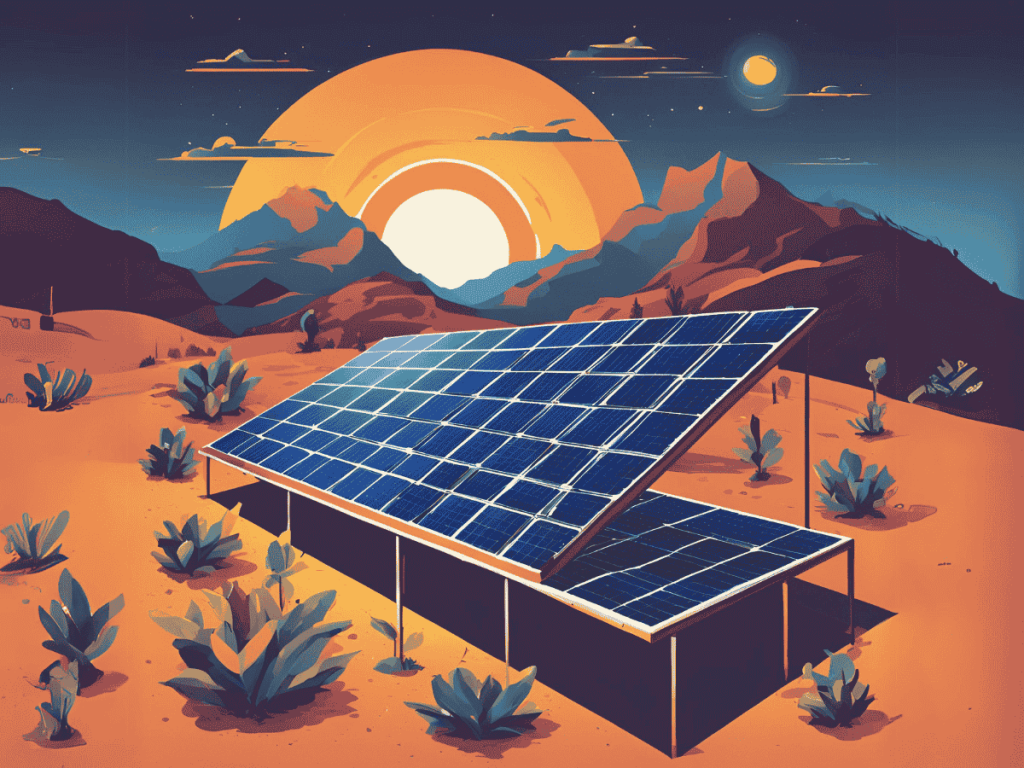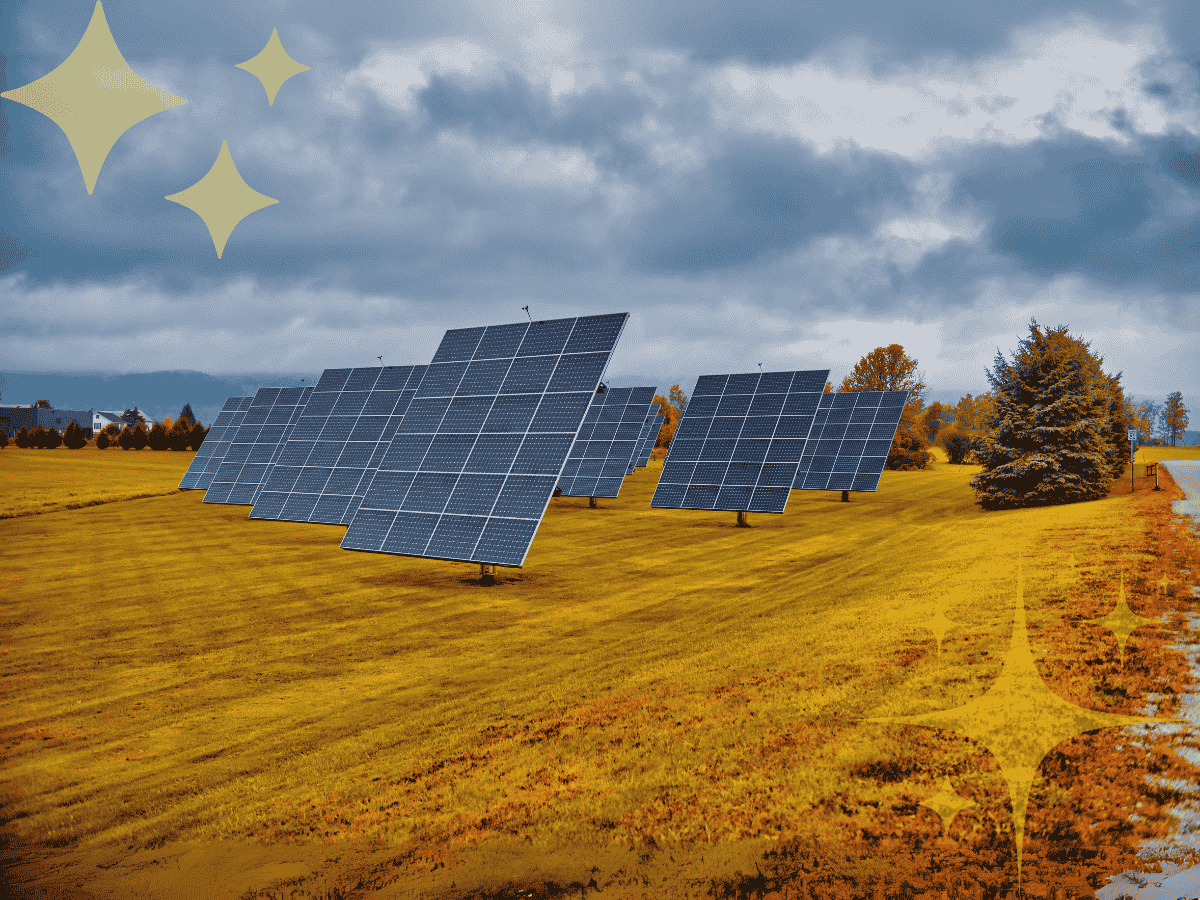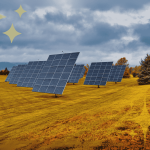Do you know? The sun emits enough energy in one hour to power the entire world for a year. Yes, it is true. Solar energy is a reliable source that can change the world’s power scenery. Solar energy has many benefits. It is a sustainable, economical, and renewable energy source.
Imagine a world where energy is clean, abundant, and accessible to all. Solar energy is turning this vision into reality. It is revolutionizing the way we power our planet. Solar energy comes as the radiant light and heat from the sun and is harnessed to generate electricity or thermal energy.
However, we are going to explore the basics of solar energy. We will cover the solar energy conversion process, solar technologies, advantages and disadvantages.
Let’s dive into the depths of the article.
What is solar energy?
Solar energy means the energy produced by the sun. Solar energy is the energy harnessed from the radiated sunlight.
The solar energy can produce heat, generate electricity, and cause chemical reactions. The total energy from the sun exceeds the world’s current energy requirements. If we can harness solar power, it can fulfill our energy needs.
Solar energy has become popular as renewable energy in the 21st century. A solar system is nonpolluting and has an inexhaustible supply forever. The total energy the sun releases to the earth is 10000 times more than mankind’s total consumption. So, it is the green replacement of fossil fuels such as natural gas, coal, and petroleum.
Solar energy is not an alternative; it’s a necessity. The amount of fossil fuel reserves is decreasing daily, and the climate is changing due to the excessive use of fossil fuels. In both cases, solar power can be the solution to a brighter future.

What is the Source of Sun Energy:
Solar energy means the energy produced by the sun. Solar energy is the energy harnessed from the radiated sunlight.
The solar energy can produce heat, generate electricity, and cause chemical reactions. The total energy from the sun exceeds the world’s current energy requirements. If we can harness solar energy, it can fulfill our energy needs.
Solar energy has become popular as renewable energy in the 21st century. A solar system is nonpolluting and has an inexhaustible supply forever. The total energy the sun releases to the earth is 10000 times more than mankind’s total consumption. So, it is the green replacement of fossil fuels such as natural gas, coal, and petroleum.
Solar energy is not an alternative; it’s a necessity. The amount of fossil fuel reserves is decreasing daily, and the climate is changing due to the excessive use of fossil fuels. In both cases, solar power can be the solution to a brighter future.
What is the Source of Sun Energy?
The sun produces solar energy through a continuous nuclear fusion reaction inside it. Fusion happens when hydrogen protons collide violently in the sun’s core. Then, the proton fuses to form a helium atom.
This reaction is a proton-proton chain reaction which emits huge energy. The sun consumes about 620 million metric tons of hydrogen per second in a single nuclear fusion reaction. Around two percent of the total sun’s energy is created by the CNO(carbon, nitrogen, and oxygen) cycle.
The nuclear fusion reactions by the proton-proton chain reaction and CNO cycles discharge huge amounts of energy. It comes to the earth as particles and waves. Solar energy causes wind, warms the earth, controls weather, and retains animal and plant life.
How Does Solar Energy Work, or How is Solar Energy Obtained?
Everyone knows solar panels convert sunlight into electricity. But most people don’t know about the science of solar energy transformation. Here, we arrange a step-by-step guide to answer the question, “How does solar energy work?”
First Step: How is Solar Energy Converted into Electricity?
Solar panels convert the solar energy into electrical power. Solar panels consist of semiconductor materials like polycrystalline silicon, monocrystalline silicon, or thin-film solar cells.
When sunlight hits the thin semiconductive layer of a solar panel, it releases free electrons from the silicon atoms. These negatively charged electrons are drawn towards the positively charged side of the solar cell. This electron movement inside the solar panel creates a flow of electricity. This phenomenon is the photovoltaic effect. The electrical current generated by this electron flow is captured by wiring connected to the solar panels. Thus, it ensures the production of usable electricity.
The more sunlight falls over the solar panel, the more electricity it generates. The solar panels receive maximum sunlight on peak sunny days and generate more electricity than on a cloudy or gloomy day.
Second Step: Energy Conversion of Solar Energy
Solar panels generate electricity as direct current or DC form. Direct current means the electricity flows in a single direction. But most of the home appliances consume AC to run.
Hence, solar electricity(DC) needs to be converted into AC electricity. The inverter converts DC to AC. The inverters also keep your solar system connected to the internet. The solar system informs you about the system’s performance through this internet connection.
Third Step: Electricity Distribution Through the Electrical Panels
The solar electricity is not directly supplied to the home appliances. The electrical distribution system does this job. The solar panels supply electricity to the distribution panel. The distribution panels distribute the solar power into different individual circuits.
Step Four: Metering Of Electricity Production and Consumption
You need an electric meter or utility meter to measure the electricity consumption. Some smart meters track both consumption and generation.
If you have both a grid connection and solar power, a smart meter is a better choice. It will calculate the electricity consumption from the grid by deducting the amount generated by your solar system. The smart meter also sends real-time data to the local utility company for billing, research, and customer service.
The net metering system of the smart meter will allow you to supply the surplus electricity to the grid to earn credits. You can use these credits to deduct future electric bills.
Step five: Solar Battery System to Store Surplus Energy
You have to install a solar battery system to store extra energy. It will allow you to use the electricity on rainy days, at night, and whenever the sun goes down.
We hope you understand what solar energy is and how it works. Stay connected with us to learn about solar panels, solar batteries, solar inverters, and meters.
How is Solar Energy Produced? Or Technologies to Harness Solar Energy:
Solar energy is harnessed through three basic technologies. “The technologies are photovoltaics (PV), concentrating solar power (CSP), and heating and cooling systems.
The PV technology converts sunlight into electricity. The CSP technology utilizes the sun’s heat to power large-scale electric turbines. The heating and cooling systems harness thermal energy from the sun to provide hot water and air conditioning.
Other solar technologies are solar architecture, molten salt power plants, and artificial photosynthesis. Solar architecture involves designing buildings to maximize the use of solar energy for heating, cooling, lighting, and ventilation.
The molten salt power plants use concentrated solar power to heat molten salt. This molten salt is stored and used to generate electricity when needed.
Artificial photosynthesis technology imitates the natural process of photosynthesis to convert sunlight, water, and carbon dioxide into fuels and chemicals.
We will discuss the details of those technologies later.
Uses Of Solar Energy:
Solar energy has a wide range of applications to ensure a sustainable future. The following are the common uses of solar energy.
In Electricity generation:
This is the popular use of solar energy. Solar panels convert sunlight into electricity. You can use this electricity to power homes, businesses, and even entire communities.
In Heating and cooling systems:
Solar energy is used to heat water for residential and commercial use. It is also used for power heating, ventilation, and air conditioning (HVAC) systems.
Solar lighting:
Solar lighting is popular in remote areas. The only cost involved in solar lighting is the installment charge. Now it is a popular outdoor lighting system.
Solar transportation:
At present, Solar energy powers vehicles, such as cars, buses, and airplanes. Although still under development, solar-powered transportation can reduce our dependency on fossil fuel-run vehicles.
Solar-powered devices:
Devices such as calculators, watches, and phone chargers run on solar energy. These devices are portable, convenient, and reduce the need for disposable batteries.
In Agriculture and Farming:
Solar energy is suitable for irrigation, crop drying, and powering farm equipment. It can reduce operational costs and environmental impact.
For Water treatment:
Solar-powered desalination systems can be a sustainable solution for producing clean drinking water. It is a reliable water system in coastal regions with limited freshwater.
For Remote Powering:
Solar energy provides electricity to remote areas. Those areas are not connected to the electrical grid. It helps to improve the quality of life for people in these regions.
The advantages and disadvantages of solar energy:
Everything in this universe has some pros and cons. Solar energy is not exceptional. Here’s a breakdown of the advantages and disadvantages of solar power:
Advantages of solar energy:
Environment Friendly:
Solar energy produces no greenhouse gas or air-polluting ingredients during operation. Thus, it reduces the impact of climate change on public health.
Cost Savings:
Solar energy systems can reduce or even cut electricity bills over time. Though the initial investment for solar panel installation may be high, it is cost-effective in the long run.
Energy Independence:
Solar energy provides you with energy independence. You generate your power and reduce reliance on the grid by installing solar power.
Job Creation:
The solar energy industry creates opportunities in manufacturing, installation, maintenance, and research.
Versatile Applications:
Solar energy has applications in electricity generation, heating, cooling, lighting, and powering devices.
Disadvantages of solar energy:
There are some disadvantages of solar energy. The drawbacks include high initial costs, reliance on weather conditions, large space requirements, challenges with energy storage, and geographic constraints.
Conclusion
We should focus on solar energy for our planet and future generations. The fossil fuel reserves are diminishing. The use of fossil fuels is harmful also to the world’s climate. So, mankind should emphasize green energy, such as solar power.
Our articles aim to learn, analyze, and scatter knowledge about solar energy. We hope you enjoy the writing and will be with us on this green journey.
What is solar power?
The power from the solar or sun is the solar power. Solar power is generated by the conversion of energy from sunlight into electricity.
Solar power is a renewable and clean source of energy. It reduces dependency on fossil fuels and helps to mitigate greenhouse gas emissions.
Why solar energy?
The present world is dependent on fossil fuels. Fossil fuels are limited and will be finished in the future. So, men should search for a new source of energy. Solar energy is an unlimited source of energy that has no adverse effect on the climate.
It is a form of renewable energy that plays a crucial role in reducing greenhouse gas emissions. It always positively impacts climate change. So solar energy is an emergency.
Who invented solar?
Solar power has a long history, and many scientists have contributed. Edmond Becquerel first introduced the basic principle of solar energy in 1839.
Charles Fritts created the first working solar cell using selenium wafers in 1883.
In 1905, Albert Einstein explained the photoelectric effect theoretically. He got a Nobel Prize in Physics in 1921 for this work. His work provided a deeper understanding of how light could generate electricity.
Later, in 1954, Bell Labs Developed the first practical silicon solar cell. This cell could convert sunlight into electricity with an efficiency of about 6%. This is considered the birth of modern photovoltaic technology or solar energy.



